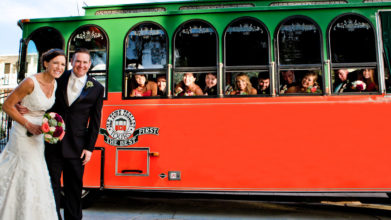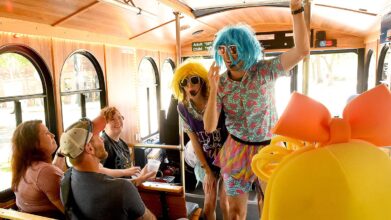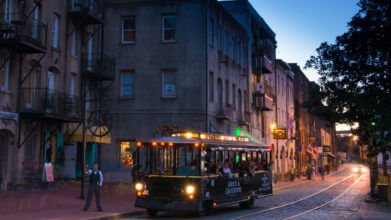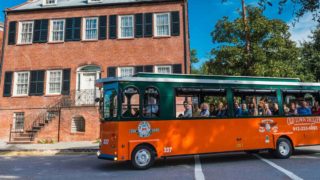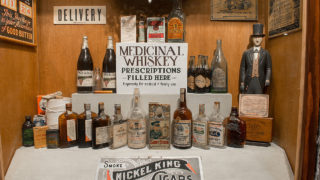Telfair Owens-Thomas House
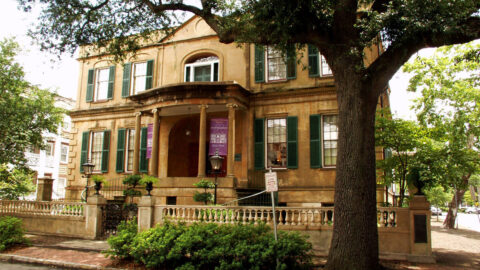
Telfair's Owens-Thomas House
The Owens-Thomas House stands as a prime example of early 19th-century Regency architecture, showcasing the visionary talent of architect William Jay. This historic mansion, completed in 1819, captivates visitors with its unique design — featuring curvilinear walls, Greek decorative motifs, elegant stained-glass panels and meticulously crafted furniture — each element contributing to its status as a masterpiece of architectural design. Throughout its history, the residence has transitioned from a private home, initially belonging to the affluent merchant Richard Richardson and later to the esteemed lawyer George Welshman Owens, to its current function as a museum managed by the Telfair Academy of Arts and Sciences since 1954.
As a museum, the Owens-Thomas House offers an immersive glimpse into the opulent lifestyles of its previous occupants through its well-preserved interior spaces, including the stately entrance hall, sophisticated drawing room, formal dining room and historically significant slave quarters. Among its remarkable features, the house’s advanced indoor plumbing system — an innovation of its time — highlights the luxuries afforded by its inhabitants. Equipped with original cisterns and a sophisticated water distribution mechanism, the house provides a rare insight into the technological advancements of the Regency period. Visitors are invited to explore this architectural gem, gaining an understanding of both its beauty and historical significance.
Owens-Thomas House Facts
The Owens-Thomas House, designed by English architect William Jay, stands as an architectural marvel completed in 1819. This house was initially built for Richard Richardson, a prominent cotton merchant and banker, and his family. Richardson’s wealth is reflected in the house’s grandeur, showcasing Jay’s design talents and the opulence of early 19th-century Southern architecture. The home’s intricate details and classic structure embody the era’s elegance, making it an enduring symbol of Savannah’s historical architectural heritage. Located in the heart of Savannah, this house has attracted visitors for generations and remains one of the city’s most visited historic sites, now maintained by the Telfair Museums.
In 1830, George Welshman Owens, a lawyer, planter, and influential politician, purchased the property, marking a new chapter in the house’s history. Owens’ acquisition of the property kept the house within his family for over a century until it transitioned into public ownership via Margaret Gray Thomas’ bequest to the Telfair Museums in 1951. This transfer allowed the Owens-Thomas House in Savannah to be preserved as a historical landmark and opened as a museum, providing visitors with insights into the complex social history of the era. Today, the museum plays an essential role in educating the public about life in early Savannah, highlighting both the lives of wealthy owners and the often-overlooked experiences of enslaved individuals who lived and worked on the property.
The Owens-Thomas House in Savannah is notable for several unique architectural and historical features, including one of the earliest indoor plumbing systems in America. This system featured cisterns and a gravity-fed water structure, reflecting the innovative design choices of the period. The property also includes a bridge connecting the main house to the original carriage house, providing a glimpse into the functional aspects of estate life in the early 19th century. Additionally, the site features intact urban slave quarters, an element that distinguishes it from other historic properties and offers visitors a rare, immersive insight into the lives of the enslaved individuals who lived there.
Designated as a National Historic Landmark, the Owens-Thomas House holds significant cultural and architectural value. Its inclusion as a landmark reflects not only its architectural beauty but also its importance as a site for understanding Southern history. The house serves as a window into the early 1800s, where visitors can explore the architectural achievements of the period and learn about the social hierarchies that defined life in Savannah. This dual focus on both the lives of the Owens family and the enslaved people who maintained their household provides a balanced and enlightening narrative that enriches the visitor experience.
The museum is dedicated to educating visitors about the complex dynamics and inequalities of the time. Through exhibits and guided tours, the Owens-Thomas House in Savannah illustrates the realities of life in the South, including the roles of the individuals who lived within its walls. The museum’s exhibits feature artifacts, stories, and accounts that shed light on both the affluent and the oppressed, creating a narrative that resonates with modern audiences. This approach fosters a deeper understanding of the historical context, emphasizing the social complexities of antebellum Savannah.
The Owens-Thomas House hosts a range of educational programs, events, and exhibitions, often focusing on topics like slavery, Southern architecture, and daily life in early 19th-century Savannah. These programs aim to engage visitors of all ages, offering a meaningful perspective on historical events and cultural developments that shaped the South. Additionally, the house features a research library with collections emphasizing Southern decorative arts, architecture, and local history, providing valuable resources for scholars and history enthusiasts alike.
Today, the Owens-Thomas House & Slave Quarters serves as a cultural institution dedicated to preserving the past and fostering an understanding of its ongoing impact. This museum offers visitors the chance to experience both the grandeur and the hardships that defined life in the antebellum South. Through well-preserved artifacts and carefully curated exhibits, it remains an important educational resource, shedding light on the complexities of history.
Historical Milestones of Telfair Museum Savannah
Founded in 1883, the Telfair Museum of Art holds the distinction of being the first public art museum in the Southern United States. Its establishment marked a turning point in the region’s cultural landscape, providing access to fine art and historical collections that continue to captivate visitors. Initially housed in the Telfair family’s Regency-style mansion, designed by British architect William Jay, the museum owes its existence to Mary Telfair, the last surviving heir of the family. Her bequest to the Georgia Historical Society enabled the creation of this cultural institution, which has since become a cornerstone of Savannah’s artistic community.
The 1980s saw significant expansions to the museum, including the addition of exhibitions at the Owens-Thomas House, which joined the Telfair Museums in 1951. This expansion not only increased visitor engagement but also allowed the museum to preserve and display a more extensive range of historical artifacts and artworks, cementing its place as a leading institution in Savannah’s cultural landscape.
In 2006, the Telfair Museums made another significant advancement with the opening of the Jepson Center for the Arts, a modern facility designed by Moshe Safdie. This contemporary building houses exhibitions dedicated to modern art and includes educational spaces, reinforcing the museum’s commitment to cultural enrichment and engagement with current artistic movements. This expansion symbolized the museum’s evolving mission to blend historical appreciation with contemporary exploration.
In 2014, the museum launched “Slavery and Freedom in Savannah,” a groundbreaking exhibition that received national attention for its innovative approach to presenting historical narratives. This exhibition provided visitors with a deeper understanding of the lives of enslaved people in the city, fostering critical discussions on race, history and social justice within the museum’s walls.
In 2019, the Telfair Museums celebrated their bicentennial, commemorating 200 years since the historic mansion was built. This milestone highlighted the museums’ long-standing impact on Savannah’s arts and culture scene and reinforced their role in preserving the city’s rich history.
Things To Know Before You Go
Visitors should be aware that access to the Owens-Thomas House is available exclusively through guided tours. These tours are scheduled at specific times throughout the day and offer a comprehensive overview of the site’s history, architecture, and social significance. Each tour is led by knowledgeable guides who provide context to the exhibits, ensuring that visitors leave with a well-rounded understanding of the historical importance of the Owens-Thomas House in Savannah.
Photography inside the Owens-Thomas House may be restricted to protect the artifacts and interiors. Preservation of these items is paramount to maintaining the authenticity of the museum experience, so it’s best to consult your guide about the current photography policy upon arrival.
For the protection of the historic furnishings and floors, visitors are advised to leave large bags or backpacks at the entrance. This practice helps prevent accidental damage and allows everyone to enjoy the tour without any obstructions in the narrow historic spaces.
Given the multi-level structure of the Owens-Thomas House in Savannah, visitors should wear comfortable, flat shoes suitable for walking and climbing stairs. The house spans several floors, and there is no elevator access, so preparing accordingly can enhance your experience.
As part of the tour includes outdoor areas, checking the weather before your visit is advisable. Appropriate attire, whether for sun protection or rain, will ensure a comfortable experience as you explore the house and grounds.
Allowing at least one to two hours for the full tour experience is recommended, as there is much to see, including the gardens and the slave quarters. This time estimate helps visitors plan their schedules, ensuring they can fully appreciate each part of the property.
Lastly, always verify the Owens-Thomas House’s operating hours before your visit, as the site may occasionally close for special events or maintenance. Checking in advance can prevent any potential disappointment and allow for a smooth, enjoyable experience at this important historical site.
Must-See Places Near Owens-Thomas House and The Telfair Museums
Pin Point Heritage Museum
The Pin Point Heritage Museum is a vibrant gateway into the rich cultural and historical fabric of a small yet deeply rooted community. Just a short distance from Savannah in Montgomery, Georgia, this museum offers an immersive look into the traditions, crafts, and daily life of the Gullah Geechee culture, uniquely preserved through generations. Visitors are welcome to explore a variety of exhibits that showcase the community’s dedication to shrimp fishing and oyster harvesting, crafts that have sustained its people for over a century.
Bonaventure Cemetery
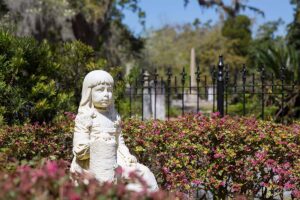
Flannery O’Connor Childhood Home
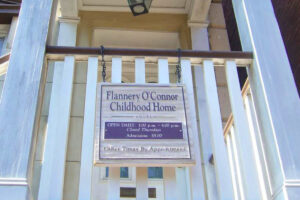
FAQs
When is the Owens-Thomas House & Slave Quarters open?
The Owens-Thomas House & Slave Quarters is open to the public from Tuesday through Saturday, from 10 am to 5 pm, with the last tour beginning at 4:20 pm. On Sundays, the hours are slightly reduced, with the site being accessible from 12 pm to 5 pm, ensuring ample opportunity for visitors to explore this historical landmark at their leisure.
How long is the tour at the Owens-Thomas House?
The tour at Owens-Thomas House typically lasts approximately one hour. During this immersive experience, visitors are guided through the historic home, gaining insights into the architectural innovation, decorative arts, and complex social history of its era.
What are the three locations of the Telfair Museums in Savannah, Georgia?
The Telfair Museums, one, part of the first public museums in the Southern United States, are spread across three distinct locations in Savannah, Georgia. These locations include the Telfair Academy, a historic mansion that houses 19th- and 20th-century American and European art; the Owens-Thomas House & Slave Quarters, offering insight into the complex history of urban slavery; and the Jepson Center, which features contemporary art and architecture. Each site provides a unique window into the rich cultural and artistic heritage of the region.


